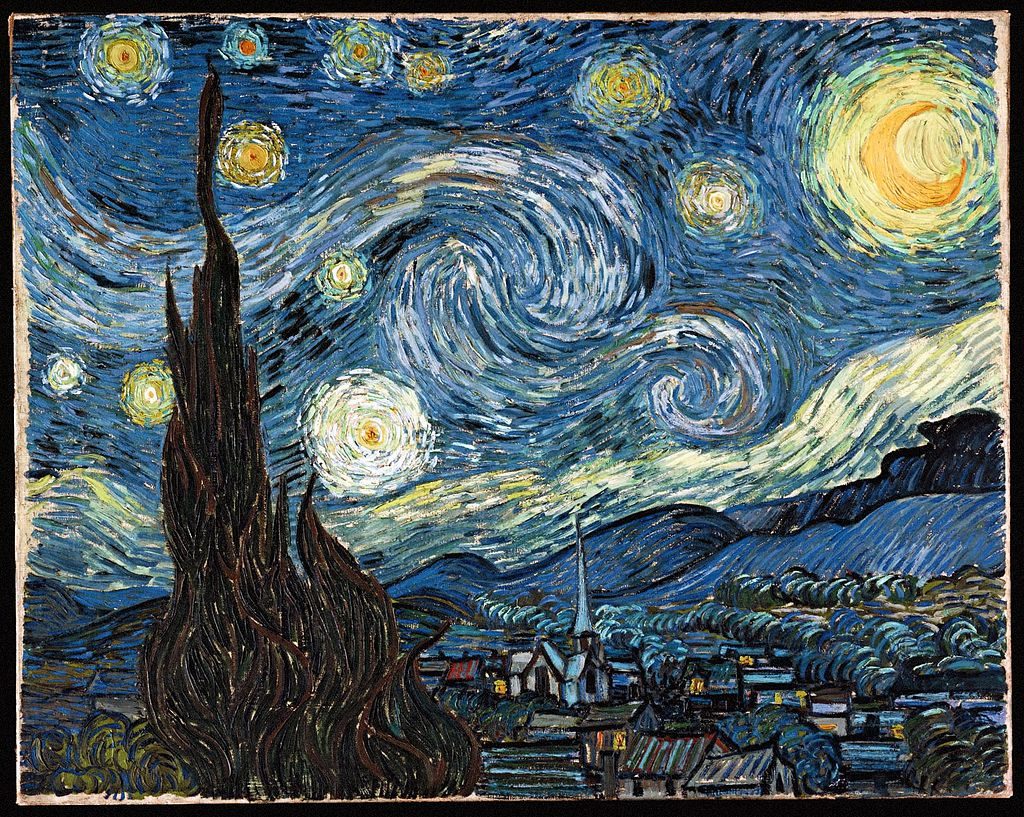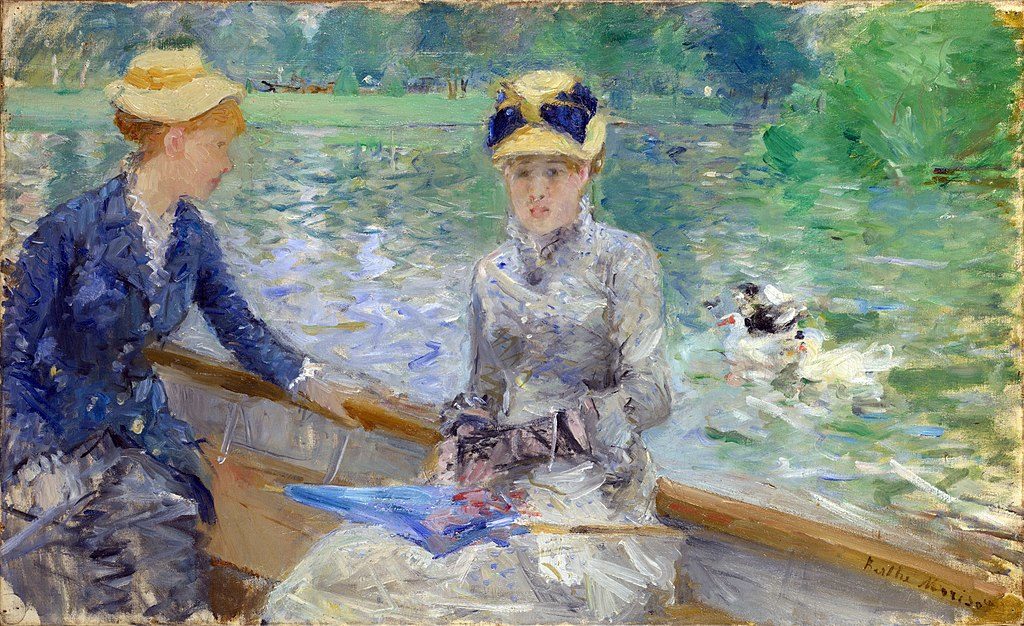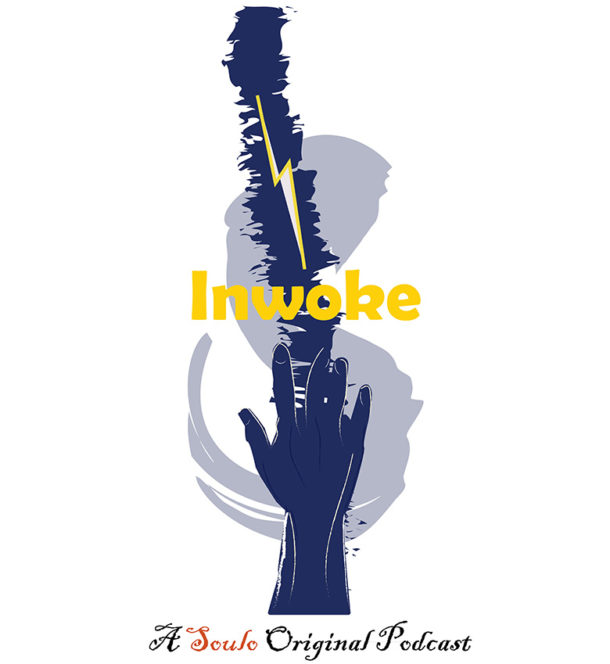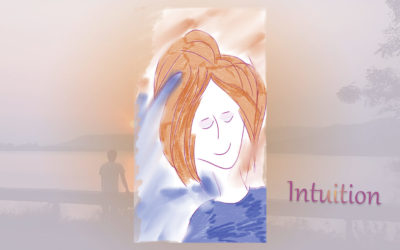Table of Contents
- Before we venture onto the story of blue let’s first understand how colors or pigments are discovered or rather found accidentally
- The history and origin story of the color blue
- How did the name “blue” came to be for a color?
- Egyptian Blue
- Lapis Lazuli – Ultramarine
- Prussian Blue
- Cobalt Blue
- Cerulean
- Indigo
In this world of colors, Blue is a color which is abundantly seen but rarely captured. A color which dominates our every waking moment by the sky and covers the 70% area of our planet through oceans.
Rightly our planet itself is called The Blue planet.
The story of colors is a fascinating one. Wherever our eyes go they appear seamlessly on everything. From the speck of dust on the ground to our clothes and things and to the sky everything is colored. As readily available they are naturally, that much difficult it is to obtain them synthetically for our use.
From the Stone Age, our ancestors learned that they could grind clay to make ochre, an earthy red.
Later the Egyptians mined in the Sinai Peninsula to obtain copper carbonate hydroxide minerals to produce a rare green hue. Throughout the time of man, scientists and researchers have found new colors deliberately or accidentally.
Mas Subramanian, a chemist at Oregon State University recently found a new blue pigment in 2009 after 200 years from the discovery of the last one, unintentionally, said that “It’s strange to think of color as something that can be discovered. Ask most scientists and they’ll tell you that’s not really how it works, anyway. “You can’t discover a color,” You can only discover a material that uses a particular reflection of a particular wavelength.”
Simply meaning, that you must find a material which absorbs all other colors, except one which it needs to reflect, the one color you intend to produce. It’s not simply mixing one color with another to form a third color. Like in the case of mixing blue with yellow to form green. That’s a far simpler way of obtaining the third color from the already existing two.
Discovering a new pigment in entirety is a beast of its own realm.
Even though colors are available abundantly, colors, like rare precious minerals or stones, are rare. As we will see in the episode later, even as expensive as gold itself.
The elusive color blue is the rarest of them all. Black, white, red, yellow and green all came to us in the early days of our civilization, Blue, however, evaded the grasp of man up until 6000 years ago and in a way until the recent modern history of the Industrial Age.
Because see, you cannot just grab some water from the ocean and mix it with something and create blue or you cannot just get hold of some sky and mix it with water or egg yolks like other colors to create blue. The feathers of a peacock do not have a single pigment of blue in them and blue eyes or flowers are not readily available either. Most importantly those cannot act as a source of the color itself.
Blue is said to be so rare that even a word for it didn’t exist until the recent Human history, up until the Egyptians. Lazarus Geiger, a linguist noted that the modern European words for ‘blue’ are derived from black and green, which existed as words for colors in the Ancient time.
Say Bleu for blue in French. Which clearly feels like has come from black. Bleu, Black.
2 pieces of research were taken under to prove that point.
One of them suggests that our language shapes our reality and so up until a word for blue came around we only thought of blue as a lighter shade of black or a different hue of green. Until you give a name to a thing distinctly it doesn’t make its presence evident.
Sounds like the law of attraction and the theory of non-duality and duality right?
Blue is a color that symbolizes trust, loyalty, wisdom, confidence, intelligence, faith, truth, royalty, wealth and heaven. It also as history sees it is a remarkable color that leads to trade and trade wars, slavery, marketing gimmicks, scientific discoveries, and world-renowned art movements, like feeling blue by the great painter Pablo Picasso. Also, how a color simply created the world’s first blueprints rightly named after it.
All of this and the origin story of blue as we know it ahead in the episode.
I am Abhishek, your host and this is Inwoke.
Before we venture onto the story of blue let’s first understand how colors or pigments are discovered or rather found accidentally
Apart from what I gathered from my research, I may not be aware of any deliberate color pigment discovery. Yes! There are a lot of companies now that try to make new colors every now and then but nothing noteworthy to be included here. But to put things into context, nowadays a lot of companies are trying to come up with signature colors so as to market their brand better and better brand it in general.
A simple example would be, why an iPhone x’s space grey is different than that of a Oneplus’s gunmetal grey.
In the early 1970s, a group of scientist at Michigan State University were trying to make a theoretical substance. Donald Farnum who led the research said “We had no interest whatsoever in making anything that had any practical use,” When Farnum and his fellow researchers conducted the research they came across a rare bright red pigment which resembled nothing they had expected. When he published a paper in a chemistry journal about his findings it caught the attention of a pharmaceutical company that decided to synthesize the compound thinking that one day it might be a useful dye.
Useful would be a small word to describe what the pigment PR254 achieved. It served as a chemical basis for a dozen more pigments and was also used in semiconductors and TV pigments.
Today PR254 is commonly known as the “Ferrari red.”
Farnum apart from the paper itself got no patents to his name or made any monetary gains from it. When asked about this he jokingly said,
“We didn’t make things to make money off them for some stupid reason,” he said, laughing. “We just did it for fun.”
Some people have an extra spirit of discovery bone in them.
Second, a color such as the Titanium white, which you may not have heard of but is used extensively all around you. House paint, food coloring, and everyday appliances. Even Apple’s newest, sleekest status symbol the Apple credit card, which is made up of titanium, is laser‑etched and Apple‑designed is also colored in Titanium white.
Dr. Nicholas Eastaugh a scientist and a Ph.D. in scientific analysis and documentary research of historical pigments commented that “I believe it is added to skimmed milk.” which quite frankly is terrifying to think of.
A famous art forger Wolfgang Beltracchi, dubbed ‘the forger of the century’, got caught by the intervention of Eastaugh by identifying one key element in his forged paintings.
In his own words, he said,
“The painting had been examined before me by a German institute but they didn’t come to a conclusion over it, so they came to me and I identified a particular flaw in it that allowed a civil case to precipitate the criminal case – and it snowballed from there,”
The flaw in question was the use of a pigment called titanium white.
Later in an interview, he added,
“This reflects the processes and technologies of the time.” Still, its impact on the art world is undeniable. “For us, dealing with authenticity of paintings, it is a discovery that is key to identifying fakes of early 20th century paintings,” he explained. Titanium white stood as a marker of time between the early and late works of certain artists. “An artist like Picasso wouldn’t have used it earlier in his career, but by the 1940s or ’50s would have, Eastaugh, said. “So a 1920s or 1930s Picasso with titanium white in it is automatically suspect.”
The forger Wolfgang Beltracchi committed 14 major forgeries that count to about 28.6$ million which is said to be just a minuscule portion of his 100’s of frauds earlier. He is now released from prison and for the first time is exhibiting art with his own original signature.
So as we will hear in this podcast further that apart from the Egyptian blue, Ultramarine and French ultramarine all other discoveries of blue were accidental and coincidental.
My point in telling everything about the current companies and titanium white and Ferrari red is that apart from the huge industrialized versions of colors now available, no major new pigments were found with intention. Most were accidents.
Two incidences of accidental discoveries can be seen in the following two examples
In the 18th century, a German Chemist named Johann Jacob Diesbach was working in his laboratory trying to make a red pigment out of the cochineal insects whose extract dyes everything from food to lipstick. The recipe Diesbach used contained Potash, Iron sulfate and alum. Apart from the extract from the insects themselves. He intended to create a pale red.
However a problem occurred which later turned out to be a boon, because the potash he used was contaminated by animal blood and by a surprising chemical reaction, instead of creating more red with two reds combined, the experiment resulted in a vibrant deep-ocean like blue.
The Diesbach blue or popularly known as the Prussian blue and even Berliner Blau hence became one of the first synthetic colors ever made.
The invention of Prussian blue lead to a well-acclaimed art movement by a famous painter and Architects all around the world found their work to be a little easier. As we go chronologically in the history of blue, I will tell you what exactly it’s about.
Second, the ancient Phoenicians created a color called the Tyrian purple, discovered in the trading city of Tyre, which is now in modern-day Lebanon. They observed, that the Murex snail contained a yellow liquid within them, which upon extraction turned purple when it came in contact with air.
The Tyrian purple basically ranged from a pale blue to dark purple to red.
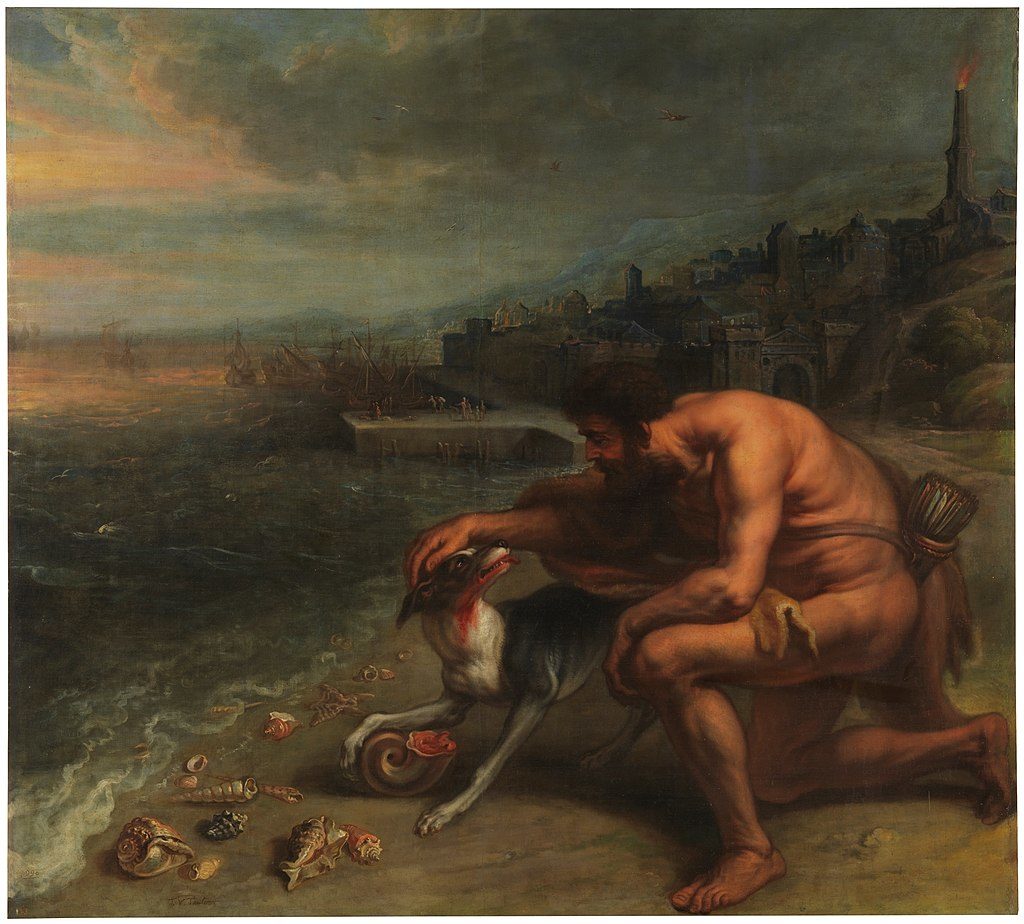
“The Discovery of Purple” byTheodoor van Thulden, 1636 and 1638, based on the painting, “The Discovery of Purple by Hercules’s Dog”, an oil painting by Flemish artist Peter Paul Rubens painted circa 1636 (Photo: Wikimedia Commons)
As some expensive variants of blue, like the Ultramarine, this too was a very expensive color comparable to the value of gold. It denoted the same characteristics as blue and symbolized the same qualities like royalty and wealth because of its rareness.
It used to take 6 pounds of liquid from 10000 snails to dye 1 pound of wool to make a single robe.
Archeological excavations prove that because tens of thousands of snail shells were found at the Lebanon port.
Now pause here for second and try to understand the environmental and monetary impact of a simple thing such as a color which we now take for granted.
Later after the development of synthetic pigments, many such practices which were ecologically harmful came to a halt.
An episode on the Radio Lab podcast, speaks about colors in a lot more detail, if you would like to you can go on and listen to it.
This way sometimes the colors lead to scientific discoveries or the scientific advancement of a period lead to a more sustainable way of producing and obtaining a color.
Today’s nontoxic or eco-friendly colors stand testimony to a time when none of that was possible.
And now the story of blue begins.
The history and origin story of the color blue
How did the name “blue” came to be for a color?
The ancient Egyptian society was the first to adopt a name for the color blue, as they were the first ones to produce blue dyes. The Egyptian blue is said to be the first synthetic pigment ever developed.
Made up of calcium, copper, and silicate.
Therefore it is said that a word for blue didn’t exist until the Egyptians.
An Israeli linguist Guy Deutscher published a book, named “Through the Language Glass: Why the world looks different in other languages”, In which he noted, from an observation of an English Scholar and Prime Minister, William Gladstone, That the choice of words in the Homer’s Epics Iliad and Odyssey describes the Aegean sea as “wine read”, which to Gladstone was a bemusing discovery.
Later Guy went on to describe how even in the Bible, there are all sorts of words for the sky and sea but no blue. Another Linguist Lazarus Geiger also noted, almost a hundred years ago that the ancient Indian epics like the Mahabharata, which date back to more than 4 millennia, even didn’t describe the oceans as blue. Same in case of the Chinese writings.
I personally have an objection on this observation though.
Personally right while I write this I can think of at least 3 mentions of the color blue in the ancient Indian Hindu mythology. Namely, The Neelkanth, which is a name given to Lord Shiva, meaning the blue-throated one, which was a result of the poison he drank during the Samudhra Manthan, “churning of the sea, which in itself is an event that took places ages ago Mahabharata and the creation of our known world. Second, is Neelanjana, meaning the one with the blue eyes, a name related to the moon sign Scorpio and third, the depiction of most Hindu Gods, Like Vishnu and Krishna as “Neelavarna”, meaning blue cast or blue-skinned.
So it is bemusing to me that how come Lazarus didn’t find the mention of blue in Mahabharata of which Krishna is a dominant figure.
Anyway continuing with their research, it proclaimed that the first colors to appear were red, black, white, then came yellow and green, the last one to appear was blue. In all of the ancient scriptures.
One logical explanation for it is that the first 5 colors were essential to our survival, blue wasn’t. Red denoted danger or blood and green depicted food. Black and white simply adjusted our biological clocks to the cycles of the sun and moon.
Now it didn’t mean that until a word was found blue didn’t exist in the universe. It did but the perception of it was different in everyone’s psyche. A logical explanation that was derived from two experiments hundreds of years apart.
Both the experiments studied isolated tribes so that no new vocabulary was introduced to them.
One Experiment was conducted in 1898, in which the elders described the sky as black and the children as muddy.
The anthropologist concluded that these people aren’t color blind but simply perceive color differently. For them every color is just a different hue of black, white or red.
The subjects in this experiment, however, had a wider definition of black. For them blue is simply a hue of the color black. Because isn’t it, that the sky turns black to blue in the cycle of day and night?
Apart from simple nomenclature, it also figured that the islanders perceived the sky a little darker than we do. It proclaimed that we only get used to the different hues of color when language trains our brain to distinguish it as entirely different entities.
In an article on livescience.com, you can read about how your color red really could be my color blue and how each one of us might truly see colors differently.
And so blue could simply be a figment of our imagination.
Like the borders of nations all around the world and the distinction of races by anything other than human.
Another experiment from 2006, which is a little controversial but tried something similar with the Himba tribe in Namibia. The tribe seemed to have a lot of words for the hues of green but none for blue. They too considered blue as a hue of green.
The experiment confirmed that our language indeed affects how we perceive the world.
Doesn’t this shake up your entire perspective about how positive self-talk or motivational speeches could really alter your living reality?
Egyptian Blue
Now let’s come back to the so-called first inventors of the word blue, The Egyptians, and continue with our story of the color blue, starting with the Egyptian blue.
The production method of Egyptian blue seemed to be passed on as it is for 2 thousand years. Artworks such as the Mereruka of the Old Kingdom dating from 2600-2100BC and an old coffin which was found, dated around the Greco-Roman period of 330BC and 400AD resemble the use of the same blue in painting them.
For the Egyptians, the color blue symbolized Life, fertility, and rebirth because according to them it was the color of the heavens and so of the Universe as well. It was also the color of the water of the river Nile, which was the all life-giving mother of Egypt.
It wasn’t the case that the Egyptian’s did not have access to any naturally occurring blue, the problem was that it had to be imported from Afghanistan because it was a semi-precious stone found in its mountains. It was a luxury item.
The semi-precious stone Lapis Lazuli could be ground up into a powder and used to make the color blue.
Considering the cost of its procurement and process the Egyptians always wanted to develop a synthetic pigment which could be used as a substitute for the blue Lapis Lazuli.
Eventually, the Egyptian blue left its borders of Egypt and spread across the Mediterranean. Various Greek and Roman objects from the time period has this blue on them. The statues of Parthenon in Athens and the wall paintings of Pompeii.
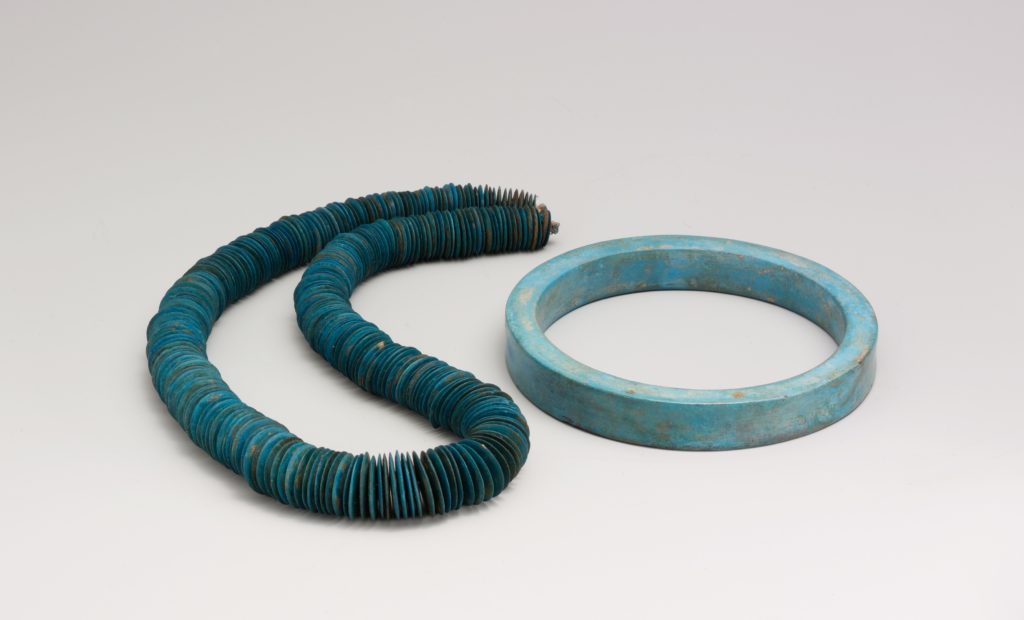
Armlet,ca. 1479–1425 B.C. (Photo: Met Museum, Fletcher Fund, 1920)
Two millennia later researchers found through experiment that the Egyptian blue has an unusual quality of emitting infrared light when the red light is shone on it. Even though not visible to the naked eye the emissions are said to be extraordinarily powerful.
A conservation scientist named Giovanni Verri was viewing a 2,500year-old Greek marble basin under florescent lights in 2006. Even though the color pigments on the basin were washed away and invisible to our naked eye, under the florescent lights the blue pigments began to glow. A signal according to him that Egyptian blue emits infrared radiation.
Because of this property scientist outside the conservation field have started taking interest in Egyptian blue, trying to use it for biomedical analyses and laser development.
In future Egyptian blue could be used for communication, its beams are said to be similar to those used in remote controls and telecommunication devices. It’s also found that its near-infrared radiation is able to penetrate through skin tissue better than other wavelengths and therefore it holds the possibility of being used for biomedical imaging.
As an ink solution, it could also be used to create new types of security inks in the future. Security Inks are basically used to protect printed materials in different forms. Mostly hidden they can only be seen under ultraviolet rays. To which as we have found Egyptian blue is a perfect candidate.
Remarkably how something so ancient which originated 6000 years ago, holds so much scientific value in modern times. Even the first creators of it never would have thought in their wildest imagination that their creation will echo on in time for so long and so resiliently.
Please keep in mind that throughout this episode we will be moving chronologically and every blue after the other we are coming closer to home in time.
Lapis Lazuli – Ultramarine
The story of the star among all the other blue pigments, the Ultramarine blue began 6000 years ago.
Also known as a true blue, the pigment was made from Lapis Lazuli a semi-precious stone available in the mountains of Afghanistan. Ultramarine as a pigment first appeared in the 6th century and was used in the Buddhist paintings of Bamiyan, Afghanistan.
The pigment got its name or rather was renamed ultramarine, meaning “beyond the sea” in Latin when it was imported in Europe by Italian traders from the port of Venice in the 14th and 15th century.
One of the most sought after colors of the Renaissance because of its deep royal blue finish, a lot of master artists living in medieval Europe wanted to use it. As I kept mentioning throughout this episode these colors were expensive. In order to use them, you had to be wealthy. Prices comparable to gold.
Ultramarine remained a color designated to the royalty and the most important of the institutions like the church. This sudden discovery of the color of the heavens, the sky, meant that it was also used to portray holiness.
The robes of the Virgin Mary in Gérard David’s painting, “The Virgin and Child with female saints”, is one of the examples.

“Virgin and Child with Female Saints” by Gérard David, 1500.(Photo: Wikimedia Commons)
A Baroque master painter Johannes Vermeer loved the color so much that he plunged his family into debt to paint “A girl with a Pearl Earring”, his famous painting.
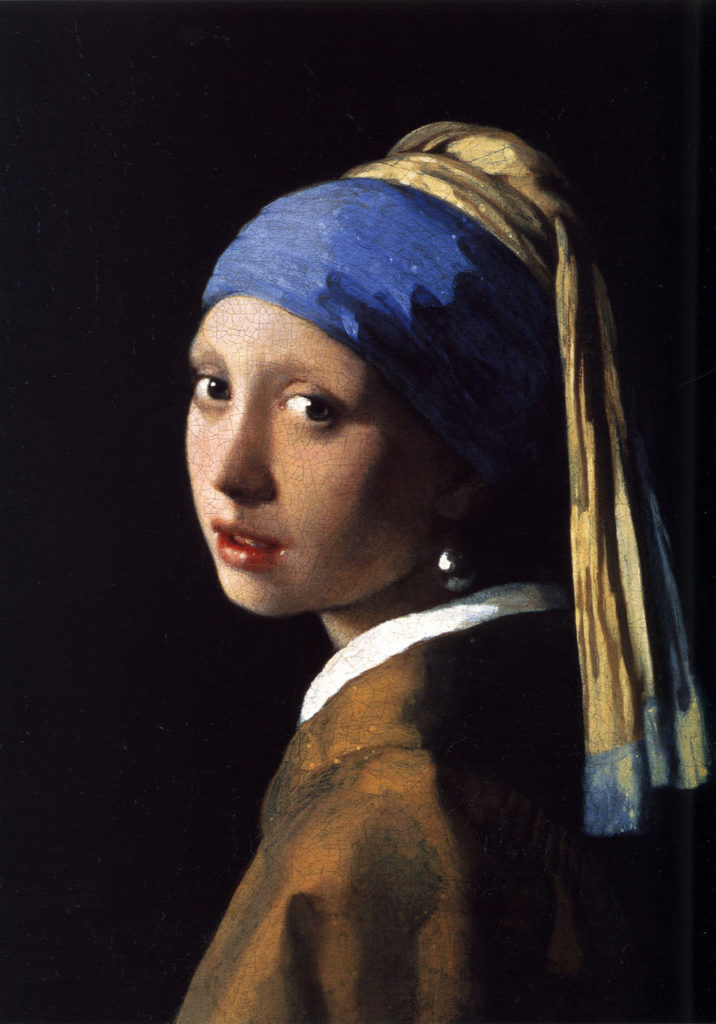
“Girl with a Pearl Earring” by Johannes Vermeer, circa 1665. (Photo: Wikimedia Commons {{PD-US}})
A movie of the same name starring Scarlett Johansson was released in 2003.
The movie depicts how a young peasant maid working in the house of Johannes Vermeer became his talented assistant and the model for one of his most acclaimed painting, “A Girl with a pearl earring.”
Even Michelangelo the great Italian master returned the payment for his painting “The Entombment“ to the church of Sant’Agostino in Rome and never completed it because he couldn’t afford to buy more ultramarine blue.
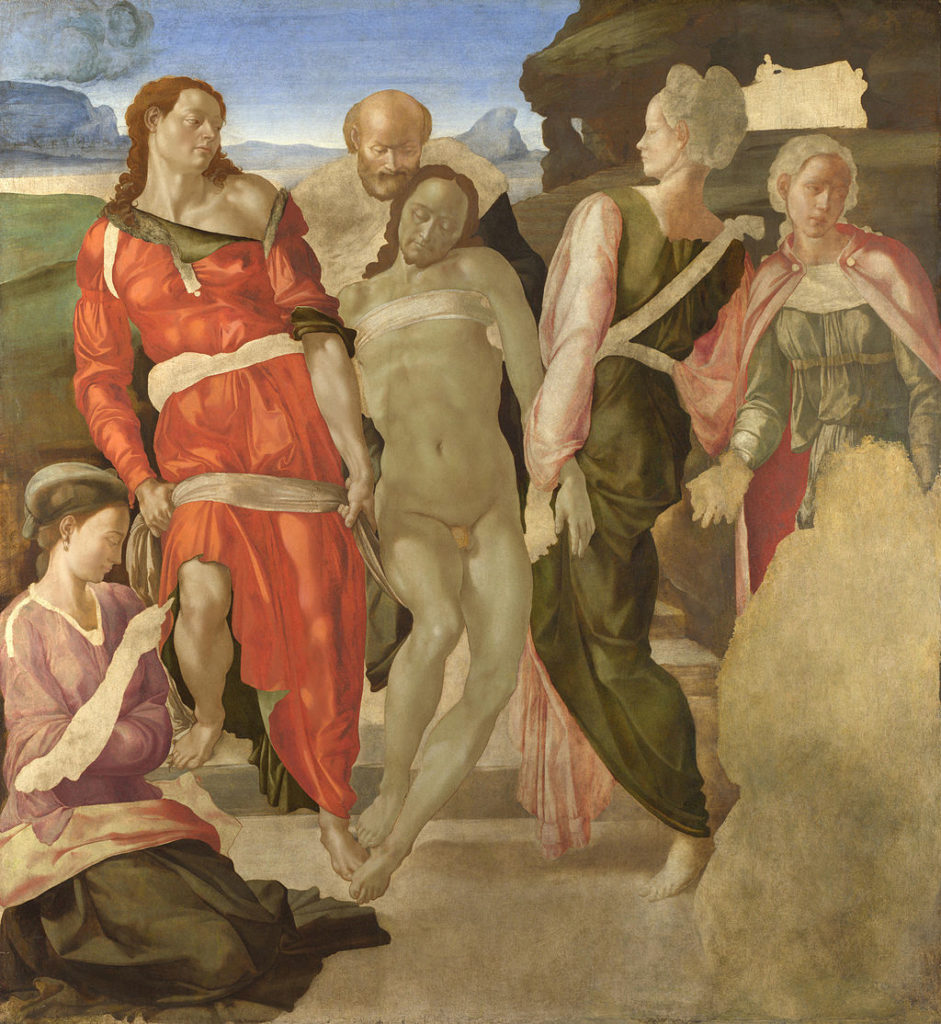
“The Entombment” by Michelangelo, Italy 1500. (Photo: Wikimedia Commons)
Personally, for me and to many other creatives this episode provides great comfort as even the likes of the great Michelangelo couldn’t complete his work because of a lack of gear or equipment. Color in his case, cameras, lenses and what not in my own case.
I wonder if he intended to paint the body of Jesus blue while they laid him in his tomb. Because remember blue signified holy.
Also, you might recognize Michelangelo from his famous sculpture of David.
A BBC documentary named the history of art in three colors has a part on blue. You can watch it if you wish to, I personally enjoyed it much because of its story and all the renaissance references.
Prussian Blue
In 1824 an offer of 6000 francs was made to anyone who could invent a synthetic version of the expensive ultramarine.
A French and German chemist both found one within weeks of each other which led to an unclear result of the contest’s winner. The French committee of Societe d’ encouragement obviously bestowed the award on the Frenchman and named the new pigment as French ultramarine.
The German chemist here is none other than Johann Jacob Diesbach who invented the even more widely known and used blue, the Prussian blue as we got to know earlier in the episode.
Pablo Picasso used the Prussian blue exclusively during his blue period. From which the expression feeling blue took birth and the Japnese woodblock artist Katsushika Hokusai also used it to create his Iconic the Great wave off Kanagawa and his thirty-six views of Mount Fuji series.
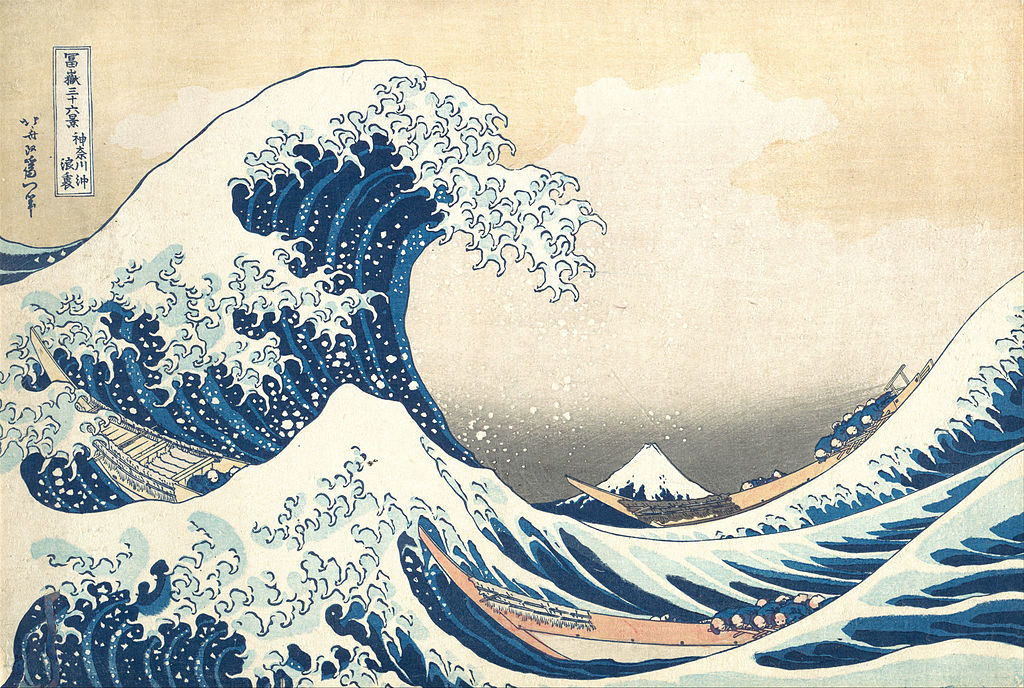
Kanagawa (Kanagawa oki nami ura), also known as The Great Wave, from the series Thirty-six Views of Mount Fuji (Fugaku sanjūrokkei),ca. 1830–32 (Photo: Met Museum, H. O. Havemeyer Collection, Bequest of Mrs. H. O. Havemeyer, 1929)
I bet that you have seen countless pictures of the great wave off Kanagawa with thousands of quotes over it but probably didn’t know that it was it. After you finish listening, you can go and see on it on the episode’s page and confirm that I have won the bet.
Another amazing discovery was given impetus by this same color in 1842, when an English Astronomer Sir John Herschel discovered that the Prussian blue had a special sensitivity to light and was of the perfect hue to create copies of drawings. And that’s how the name and the application of it came to be known as the “Blueprints.”
In my opinion, Diesbach didn’t get the award of the 6000 francs but gained something even more valuable. A color to his name with its distinct identity and expansion.
The contest was held in 1824 however the invention of French ultramarine took until 1826.
Cobalt Blue
Meanwhile, another variant of blue that was available at the time was Cobalt blue.
Cobalt blue originally dates back to the 6th century BC where the people of Babylonia used it for making blue-glazed stonewares up until the 8th and 9th century.
A purer alumina-based version was later found by a French chemist named Louis Jacques in 1802. However, the true commercial use of Cobalt began in 1807.
Famous painters like Vincent Van Gogh who used daily ration money, for paint, started using Cobalt as an alternative to the expensive ultramarine to paint many of his artworks of the total 2100 he ever created.
One of his most iconic paintings the “Starry Night” which you might have also seen a thousand times on social media with quotes again, makes me understand now that the dreamy night sky in it is painted by all the blue mentioned here, i.e Prussian, Ultramarine, Cerulean and especially Cobalt.
Btw, all of the artwork and paintings I am mentioning right now in this episode will be available on soulo where the transcript of this episode will also be hosted. Right below the episode, I will post the link to that article so that you can actually see all that I am describing. After all, colors are a visual phenomenon.
Cerulean
A so-called derivative of Cobalt, Cerulean was made up of two more ingredients. The sky-colored paint was perfected by Andreas Hopfner in Germany in 1805. Until 1860 the color, however, was not available as an artistic pigment.
In 1887, An artist by the name Berthe Morisot created a painting called “A summer’s day”, in which he used the cerulean blue along with cobalt and ultramarine to paint the coat of the women in that painting.
According to me, what makes this painting remarkable is that it depicts all three type of blue mentioned here so far in the same painting and distinct enough to be recognizable separately.
Recently, Pantone a color company declared cerulean as the color of the millennium and “the hue of the future.” In 1999.
Indigo
Continuing forward in our quest up till the modern blue, we now come across a not so rare and widely available pigment of blue which resulted in a trade war between Europe and America.
The blue dye in question here is called Indigo.
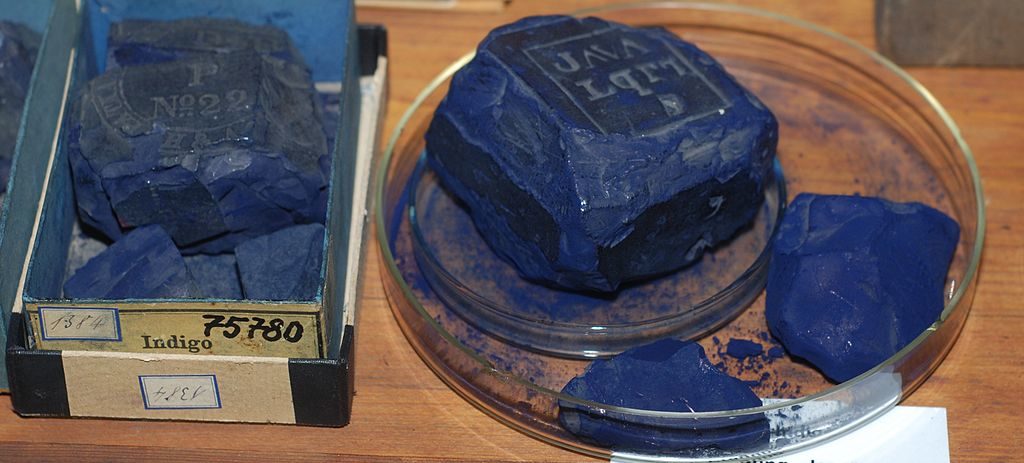
Indigo, historical dye collection of the Technical University of Dresden, Germany. (Photo: Wikimedia Commons (CC BY-SA 3.0)
Newton who introduced the color spectrum believed that the rainbow should have 7 distinct colors, like the 7 days of the week, like the 7 known planets at the time and also the 7 musical notes.
At the time facts suggested that the rainbow had 5 colors. However, Newton, along with orange pushed Indigo in the mix, to much shock of the scientists at the time.
Even though blue was expensive to use in paintings the arrival of the new blue dye, Indigo, obtained from a crop called as the Indigofera provided a cheaper alternative to dying textiles in place of the rare blue from Lapis Lazuli.
Indigo was extensively cultivated all throughout the world. Especially in India.
Indigo was introduced to Europe from India in the 16th century. Throughout the middles ages, however, Indigo remained a rare commodity in Europe.
The Portuguese explorer Vasco Da Gama at the times was tasked with finding a direct route to India through the sea. Which as we all know that he succeeded in. Once the direct trade to India was established, it also opened up access to the Spice Islands, China, and Japan.
Importers of Indigo now could avoid heavy duties imposed by the Greek, Persian, and Levantine middlemen. They also were relieved from the strenuous and dangerous land route which they used earlier.
Automatically afterward the Indigo trade took off in Europe and most of it was imported from the ports in Portugal, Netherlands, and England.
To North America, Indigo was introduced by Eliza Lucas Pinckney, a remarkable woman of her time who looked over 3 of her cultivation businesses. One can see her as an entrepreneur ahead of her time.
Single-handedly, Eliza Lucas made Indigo the number one cash crop of the revolutionary war by the means of its cultivation and later processing it as a dye. One-third of the total colonial exports from South Carolina were credited to Indigo exports.
The only drawback of this amazing feat was that it fueled African slavery in the Indigo plantations. Movies like the Django Unchained paint a picture of the time very vividly.
Indigo was important in ways that in the Edo period in Japan, the commoners were banned from wearing silk. Which lead to the increased cultivation of cotton in the region. The growing textile industry subsequently needed a dye that could color cotton and coincidentally Indigo was one of the few substances that could dye it.
The Navy blue that we now know also came forth from Indigo in the 18th century. It was adopted as the official color of the British Royal Navy.
In 1880 natural Indigo was replaced by a synthetic pigment. The pigment is still used to dye our Jeans. Scientists now have however discovered a bacteria which produces the same chemical reaction as the one in Indigo plants. A method called the “Bio-Indigo,” now will play a huge part in producing environment-friendly denim in the future.
One last blue that came into existence before the one discovered in 2009, which we mentioned earlier in the Episode, was Klein Blue. It was found by a French artist who painted and created some 200 monochrome canvases, sculptures and even asked human models to cover themselves in it so that he can print their bodies on a canvas.
The latest blue the YInMN Blue, or the Bluetiful blue, as named by the Crayon Company Crayola, which introduced YInMn blue as a new shade in their collection, was accidentally discovered by Mas Subramanian and his fellow students after 200 years of the last blue pigment, which was the Prussian blue, in the same fashion as it, at the Oregon state university laboratory during a failed experiment.
“I knew immediately this was a big discovery, so I filed for the patent,” said Subramanian in an interview.
Subramanian explained that blue is an uncommon pigment to stumble upon. Clearly evident by the Prussian blue earlier. It is said to be the first inorganic pigment to be made since Cobalt in the 19th century.
And unlike any other blue, YinMN blue is very stable. It reflects heat and does not fade.
The absences of toxicity, durability and heat-reflecting properties, YinMN blue has opened the door to environment-friendly and safe colors for humans.
We all have heard or seen in various advertisements that the paint companies promote their paint as less toxic or not toxic at all and we wondered what it really meant. But now through this journey of blue we discovered that colors are perfectly capable of emitting radiation and some elements in them are particularly harmful to the environment and us.
As we now know that how blue pigments carry a rich heritage of scientific inventions, global trade, and artistic movements, we come to a realization, that the simplest of things around us carry magnificent stories and how the efforts of each one in history have led to the comfort and choice that we now reap.
We also learned that some luxuries come at the cost of other lives, like the Murex Snails of Tyre who were squished by thousands to paint a single robe and to make Indigo dyes slavery was encouraged. And how some colors are toxic in nature and harm the environment.
This example opens our eyes to many such possibilities of our consumerism. Asking us to question how and from where we are obtaining what we need and is there a better alternative source, like bio-colors, to source the objects of our desires.
Sources that sustain the beautiful world we live in and the lives on it.


